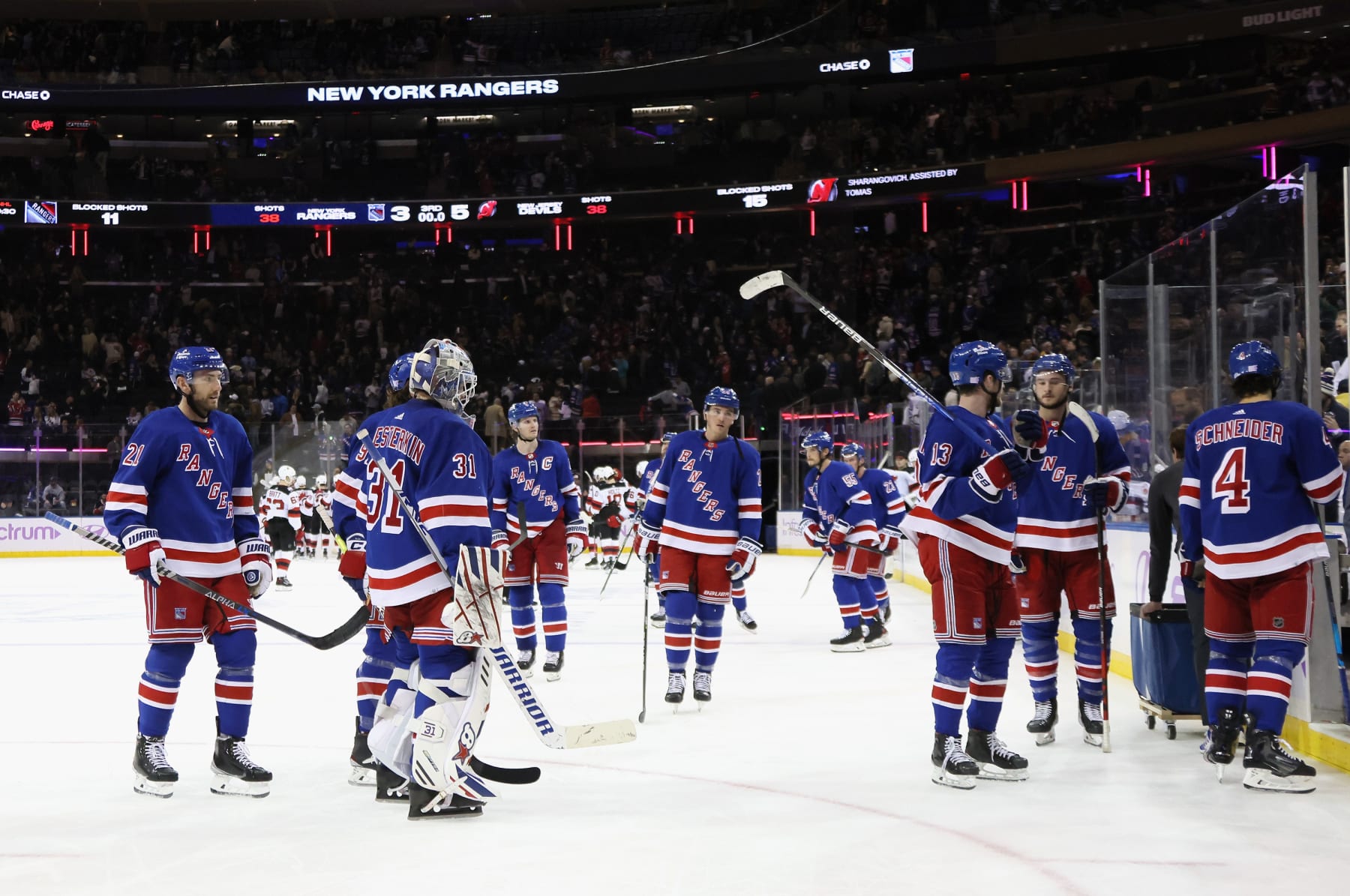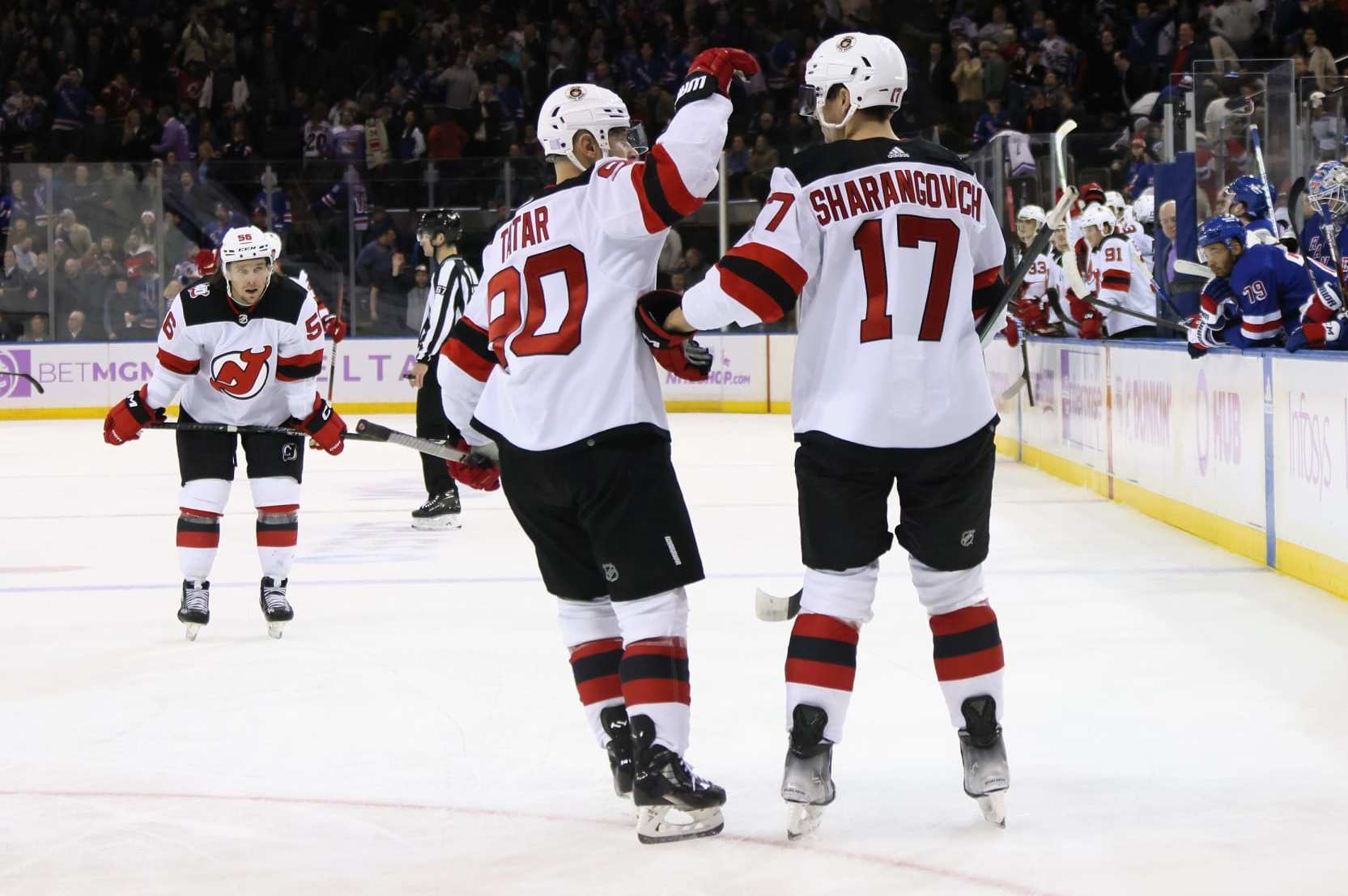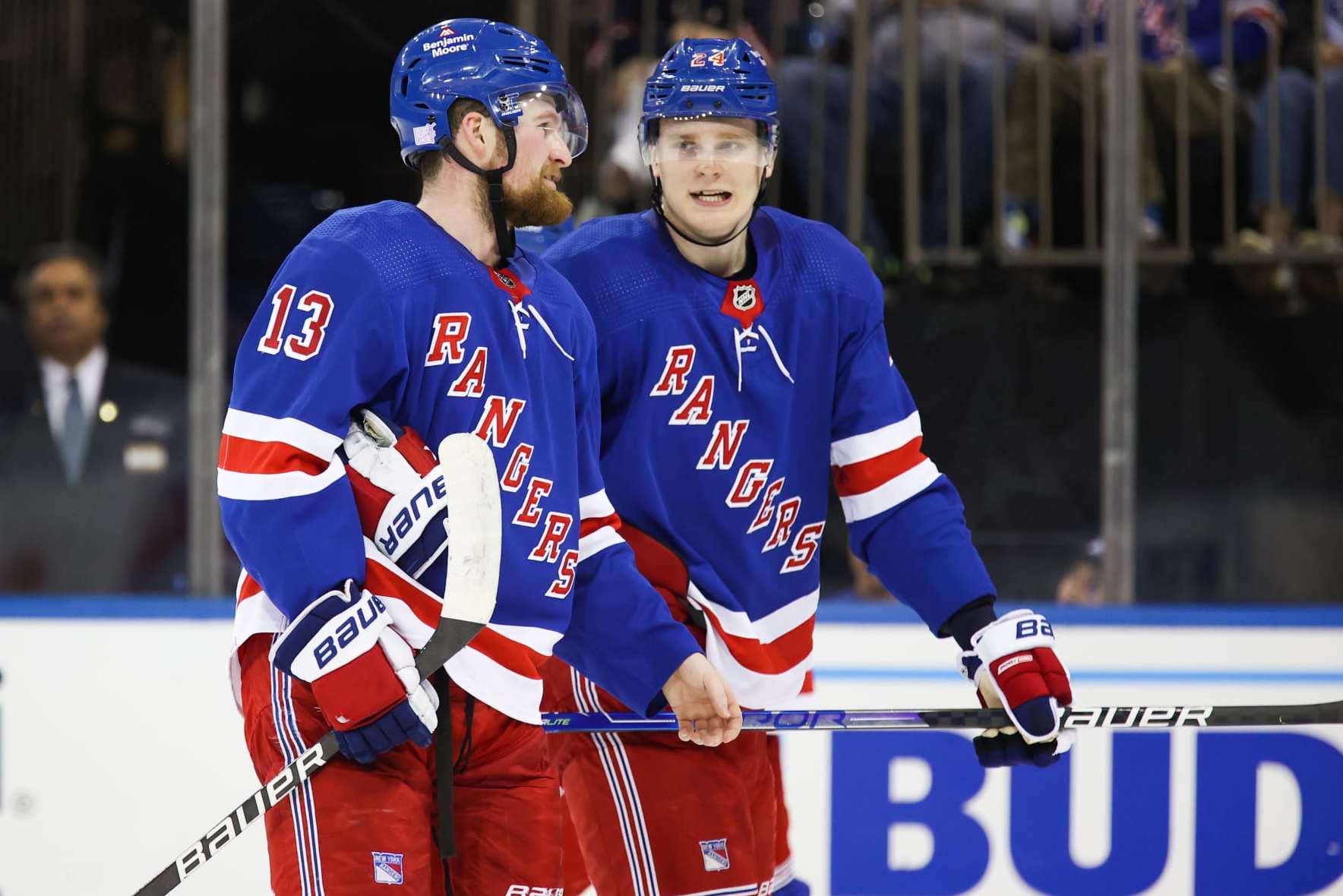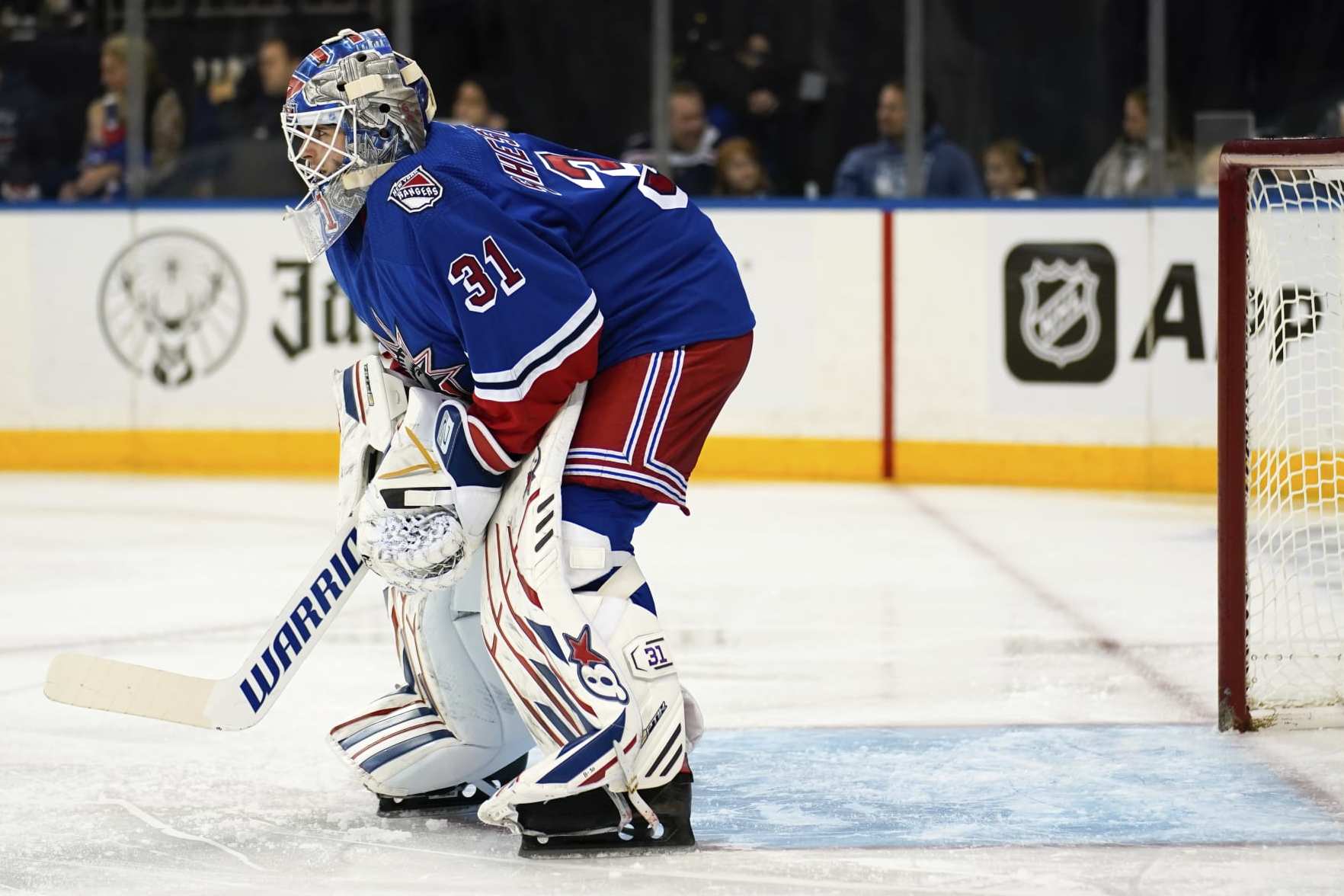N/A
NHL
The Reasons for the Bruins' Historic Start, Ranked

Have you heard the news? The Boston Bruins are pretty good this year.
They went 14-0-0 at TD Garden before Monday's shootout loss to Vegas, setting a new NHL record for the longest home streak to start a season. They persevered through key injuries, goaltender Linus Ullmark is making an early case for Vezina contention, and it looks like new head coach Jim Montgomery is panning out.
At 20-3-1, it's time to take a closer look at what's behind the magic for the No. 1 team in the Atlantic. Plenty of little and big things have come together for Boston, so let's rank some of the most evident in order of significance.
9. Closing Time
Surely we all remember those iconic Semisonic lyrics: "Closing time, you don't have to go home, but you can't stay on the TD Garden ice for the goalie hug."
The Bruins have had some wild comeback efforts and otherwise strong scoring performances in third periods.
Is that a good thing, a bad thing or just a thing?
We'll see.
I'd argue the ability to turn it on and decide to win in the third could be good for confidence come playoffs, but at the same time, you don't want to get too confident and think you can have a horrible first period when the other team is giving it 110 percent.
Their first home loss—a shootout against Vegas on Monday—is the best example you'll get of this. The Bruins went down 0-3 against the other best team in the league, climbed back to tie it up and force overtime and lost in the shootout with their backup goalie.
Maybe the pain of losing to former head coach Bruce Cassidy in that fashion will teach them a lesson, but honestly, they had to lose at home at some point this season, and they still got a point against the best team in the West.
It's hard to find this pattern too troubling—for now.
8. Rising up to Top Teams
I'll hand it to the naysayers; at least they were creative. Instead of going for the typical "Is X team peaking early?" trope when it came to these Bruins, they opted for strength of schedule complaints.
The parity in the NHL is so evident right now that Boston's start would've been impressive regardless of who they played, and, yes, the schedule early on featured teams projected on the weaker side.
But the season was so young, and, in retrospect, some of those projections have already changed. The Bruins beat the Stars, Penguins Red Wings, Lightning (twice), Hurricanes and Avalanche, and most recently came back to take the Golden Knights to a shootout. I'm not writing any of those opponents off.
7. David Krejčí
People have underestimated David Krejčí's impact his entire career, and the reception to his return to the Bruins on a one-year contract this season was no different.
To be fair, Krejčí is 36 and left the NHL to play for HC Olomouc in the Czech Republic last season. But he said that wasn't a matter of slowing down or writing off the NHL forever; he understandably wanted to be closer to home during the uncertainty of a pandemic.
Krejčí's re-signing with the Bruins also flew under the radar amidst the will-he-won't-he saga with captain Patrice Bergeron's contract.
Per usual, the noise had no negative impact on Krejčí's play. He's Boston's fourth-highest scorer with eight goals and 19 points in 21 games. Even more importantly, he's a stabilizing, elder presence on the "Czech mix" line with superstar David Pastrnak and Bruins newcomer Pavel Zacha.
There's been so much fuss about "the perfection line" in recent years (as there should be), but these days in the NHL, depth scoring is just as necessary. Krejčí deserves all of the flowers and respect while he's still an active player, and the way he held down the fort during the Bruins' injury issues at the beginning of the season is a pretty accurate microcosm of his entire career with the franchise.
6. Jim Montgomery and Winning for Each Other
He hasn't been a particularly loud presence in the media, and you get the feeling he wants to let his players—and what they've done on the ice—do the talking. They have praised their first-year coach Jim Montgomery for many things early in his tenure, but they all have the theme of building confidence and freedom. They seem to really love Montgomery, and that matters.
I'd also venture a guess that the Bruins' success at home has at least something to do with the positions Montgomery can put his players in with home-ice advantage. Maybe it's a galaxy-brain take, but perhaps we'll do a deep dive into Boston's systems to figure it out later.
5. Somewhat Unexpected Depth
The health of the Bruins' core was in rough shape heading into the season, with Brad Marchand (hip), Charlie McAvoy (left shoulder), and Matt Grzelcyk (right shoulder) all out with no specific timelines in sight. Many doubted—especially after last season's first-round exit—that the next men up could handle replacing these three in terms of production and minute-eating.
Many were wrong.
The aforementioned Krejčí was obviously huge before Marchand's surprise early-ish return on Oct. 27. So was Jake DeBrusk, who has been the best version of himself since his first-line promotion and has eight goals and 17 points in 23 games this season.
Taylor Hall has had a revival of the clutch factor that once single-handedly dragged the Devils into the playoffs. Pavel Zacha has proved a great acquisition. Heck, even Nick Foligno looks like he's in his prime again.
One skater's ability to step up has been the most important, though…
4. Hampus Lindholm
Lindholm was always great on the Ducks, and please excuse the East Coast bias, but even then, I didn't realize just how much I'd enjoy watching him play defense night in and night out.
He's fit so well into the Bruins' system, and it's one of those things where you wish Charlie McAvoy were fully healthy the whole season. Nonetheless, his absence has given Lindholm an opportunity to shine and created some good problems regarding the defensive pairs.
Even with McAvoy back, Lindholm is leading Bruins skaters in average time on ice, logging 24:18 per game. He's been a key part of Boston's massively effective penalty kill as well as the power play. He's on pace for a career year statistically with four goals, 19 points and a plus-22 in 24 games.
According to naturalstattrick.com, the Bruins have a 68.8 percent of the goal share at 5-on-5 with Lindholm on the ice.
They wouldn't be where they are right now without him as the No. 1 defenseman through a significant stretch.
3. The Return of Patrice Bergeron
Perhaps the return of captain Patrice Bergeron has been most important off the ice. As effective as the perennial Selke contender still is in his first-line center role, I've been thinking a lot about the way he handled the Bruins' signing of Mitchell Miller. As a juvenile, Mitchell racially abused and bullied Isaiah Meyer-Crothers, a Black classmate with developmental disabilities.
The way he spoke out against it paved the way for his teammates to do the same, and Bruins management acknowledged the players' opposition was part of the reason they took back Miller's offer.
This situation could have ended poorly in several ways, but Bergeron instead made sure fans were clear of his and his teammates' stances on the matter and refused to let it hang over the players' heads. This leadership ensured Miller would not become a Bruin, and it ensured the room was on the same page and there would be no lingering internal animosity.
There's no doubt in my mind this could've sent another team with a different captain off the rails. The Bruins have Bergeron.
2. David Pastrňák
When you think of the 2022-23 Boston Bruins, there's a good chance David Pastrňák comes to mind first. Through 24 games played, he's leading the team with 17 goals and 35 points, the latter of which is good for fifth overall in the NHL.
Not to mention, he scores the type of goals and makes the type of plays you dreamed of doing yourself as a kid when you thought you'd make it to the NHL.
According to naturalstattrick.com, Pastrňák has 27 high-danger chances at 5-on-5, which is pretty impressive considering seven of his 17 goals have come during a man-advantage. Interestingly enough, he's also drawn 10 penalties.
Pastrňák has kept the Bruins afloat on the scoresheet while key players were missing. He's simply electric, he's Boston's power play ace and he's doing it all in the face of a contract year.
1. Linus Ullmark
Linus Ullmark has been a consistently above-average goaltender since he entered the NHL in 2015, especially considering he spent most of those years bouncing around a struggling Sabres system.
Even so, I doubt many people had him slated as a 2022-23 Vezina contender, but here we are. The Bruins' 20-3-1 start full of records simply wouldn't have been possible without Ullmark's (14-1-0) elevated performance.
His goals-against average of 1.93 (hello!), save percentage of .936 and 14 wins are all tops in the NHL. According to moneypuck.com, his goals saved above expected is a solid 10.6.
You also think about how badly the Bruins needed a stabilizing figure in net to build confidence at the beginning of a season without key players. Ullmark more than provided that reassurance.
This has to be the best start to a season for a Bruins goaltender since Tim Thomas in 2010-11. No pressure.
Is It Time for the Rangers to Panic? The Eastern Conference Might Force Them To

The New York Rangers had every reason for optimism heading into the 2022-23 NHL season. They were coming off a run to the Eastern Conference Final, took a massive step forward in their rebuild, and boast a roster that has at least one elite player at forward, defense, and in net.
But now that we are a quarter of the way through the season the Rangers have not yet looked like the Stanley Cup contender they were supposed to be, and it might be time to start wondering if it is panic time. Not only because the Rangers are demonstrating some of the same flaws that held them back at times a year ago, but also because the rest of the Eastern Conference might cause some problems for them in their playoff pursuit.
The Rangers enter play on Friday just barely on the outside of the Eastern Conference playoff picture, and even though there is still a lot of hockey to be played this is not a position that anybody expected them to be in at any point in the season. While the Rangers seem to have stagnated in the first quarter, teams like the New York Islanders, New Jersey Devils, and Detroit Red Wings have all taken big leaps forward. That makes an already top-heavy Eastern Conference that much tougher.
The Islanders have their own superstar goalie in Ilya Sorokin (who is playing at an absurd level) and have benefitted from a start that was not interrupted by a massive road trip and COVID complications like last year.
The Devils have suddenly transformed into an absolute machine and have been one of the league's best teams through the first two months, and have put themselves into a position where even if they regress in the second half they have a built-in cushion to soften the blow.

And even the Red Wings are starting to look like a potential playoff team after a big offseason. Add in the usual suspects at the top like Boston, Tampa Bay, Toronto, Pittsburgh, and Carolina, as well as a Florida team that is still trying to find its way, and suddenly you have 10 viable playoff teams in the Eastern Conference. Somebody is going to miss out.
Last year's Eastern Conference playoff race was unique in the sense that there was a pretty definitive gap between the eight playoff teams and the non-playoff teams. The closest non-playoff team finished 16 points out of a playoff spot, while only one other was within even 25 points of a playoff spot. From December on there was virtually no playoff race and the teams at the top had relatively little pressure.
That is not going to be the case this season, and the later into the season it gets, the more difficult it becomes to make up points.
But it's not just the fact there are so many more good teams in the Eastern Conference this season that has to be concerning for the Rangers.
It's that they still have some very concerning flaws of their own.
For starters, they do not generate anywhere near enough offense during 5-on-5 play. A lot of the Rangers' offensive success last year was generated by its power play. And while that can still be very impactful, you do not want to have to rely on that to carry all of your offense.
When it came to 5-on-5 goal scoring, the Rangers averaged just 2.35 goals per 60 minutes (via Natural Stat Trick) a year ago, a mark that placed them 21st in the NHL and 14th among the 16 playoff teams (ahead of only Los Angeles and Dallas). For much of the season, they had major depth issues with their bottom-six forwards, and it was not until they added Frank Vatrano, Andrew Copp, and Tyler Motte at the trade deadline that they started to get more dangerous at even strength.
A sometimes overlooked storyline this offseason was that Vatrano, Copp, and Ryan Strome (last year's No. 2 center) all left in free agency, while only Vincent Trocheck was brought in to replace them.
That was a lot of scoring depth going out the door. The Rangers were banking on Trocheck being an upgrade over Strome, and their collection of young forwards (Alexis Lafreniere, Kaapo Kakko, Filip Chytil, Vitali Kravtsov) all taking steps forward and playing like the top picks that they were.

While Trocheck has been fine, he has not scored at the same pace that Strome did, while the young players are not really progressing with their production. If players like Lafreniere and Kakko do not become stars, it will really hold back the Rangers' ability to reach the next level.
Entering play on Friday the Rangers are still only 19th in the league (again via Natural Stat Trick) in terms of 5-on-5 goals per 60 minutes. That is not where they want to be.
They do have around $2 million in salary cap space to play with and could use another significant tweak at the deadline like last year.
The other issue for the Rangers is that starting goalie Igor Shesterkin has been human this season, instead of unbeatable. Shesterkin's 2021-22 season was one of the best individual goaltending seasons in recent memory and helped mask an awful lot of Rangers' flaws, both offensively (allowing them to win low-scoring games) and defensively (covering up their shortcomings in their own end). As he went, the Rangers went.

As good as Shesterkin is, it was always going to be unrealistic to expect him to maintain a .935 save percentage over a full season every year. The Rangers had to be ready for regression there and have enough support to make up for that. It has not really happened.
Shesterkin can be better, and he very well might. But there is no guarantee he is as dominant as he was a year in what was a special year. If he is not, and if the Rangers do not get more even-strength scoring, they could suddenly find themselves in a real—and unexpected—scramble for a playoff spot in a dramatically improved Eastern Conference.
